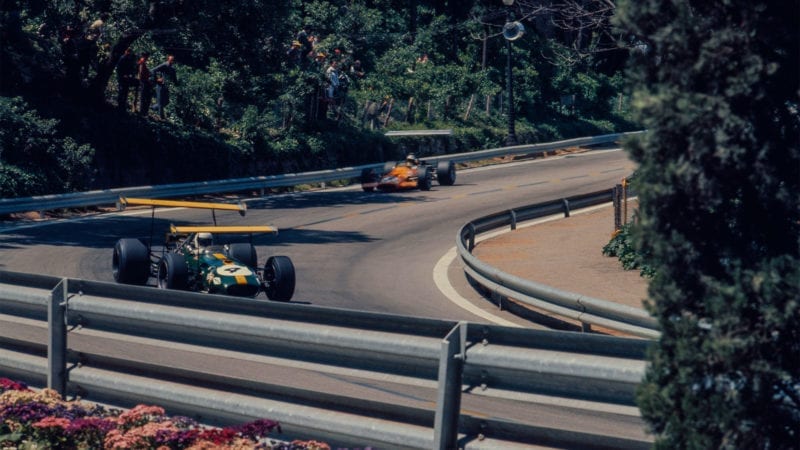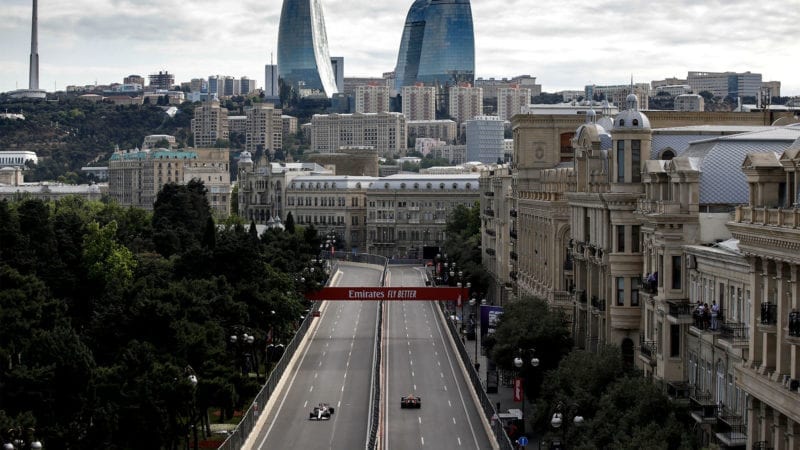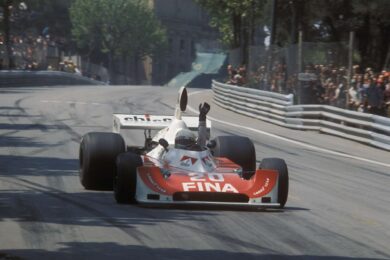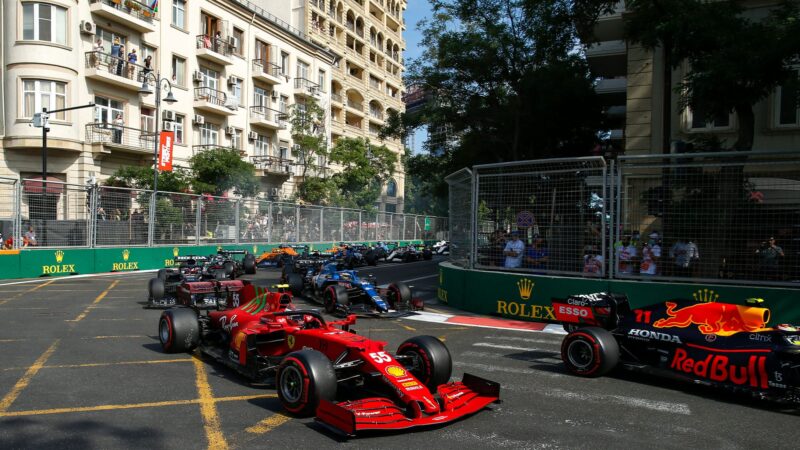On F1’s arrival there in 2016, Jenson Button described the track as “mad, really” adding that Turn 14 was “right on the edge”.
As well as racing in the tight barrier-lined confines of city streets, perhaps what makes Baku so reminiscent of Montjuïc is the canopy of trees the drivers race under.
The sensation of speed is almost palpable as the foliage flashes by, the shadows cast by the overarching branches ramping up the challenge in between shafts of light blasting through gaps in the leaves.
It’s some antidote to the wide expanse of nothingness which domes the Abu Dhabi and Bahrain circuits.
What further contributed to Baku and Montjuic’s brilliance is similar to what makes the concept of NASCAR going road racing so entertaining. Modern F1 cars weren’t designed to race on this kind of circuit. When they do, the resultant thrills and spills are brilliant.
The first race held in Baku as the 2016 European GP didn’t exactly set the pulses racing, but subsequent events on the city centre street circuit threw up thrilling races and unexpected results.

Montjuïc – beautiful but deadly
Daniel Ricciardo pulled off some audacious moves to come through to win from 10th on the grid in 2017, while Lance Stroll became the youngest ever podium finisher at the same accident-filled race.
The next year saw Fernando Alonso drag his almost three-wheeled McLaren round almost the entire lap after early collisions, the Red Bulls ended a race-long duel with a collision and a late puncture cruelly took the win away from Valtteri Bottas.
Montjuïc Park was similar in combining exciting racing with hair-raising accidents. 1969 saw Jackie Stewart take Tyrrell’s first F1 win on the park street circuit, the Scot completely dominating a race of attrition – both rear wings failed on the Lotuses of Graham Hill and Jochen Rindt, the latter particularly lucky to escape after his car flipped over, leaving the Austrian trapped inside.



